This month we provide an update on the Hôpital de la Miséricorde and analyze controversial plans by Hydro-Québec to integrate an electricity substation into the haunted site. The ghost-ridden Hôpital de la Miséricorde has been empty for years and is starting to crumble. Located on prime real estate in Downtown Montreal...
Welcome to the forty-ninth installment of the Haunted Montreal Blog!
With over 300 documented ghost stories, Montreal is easily the most haunted city in Canada, if not all of North America. Haunted Montreal is dedicated to researching these paranormal tales, and the Haunted Montreal Blog unveils a newly-researched Montreal ghost story on the 13th of every month! This service is free and you can sign up to our mailing list (top, right-hand corner for desktops and at the bottom for mobile devices) if you wish to receive it every month on the 13th!
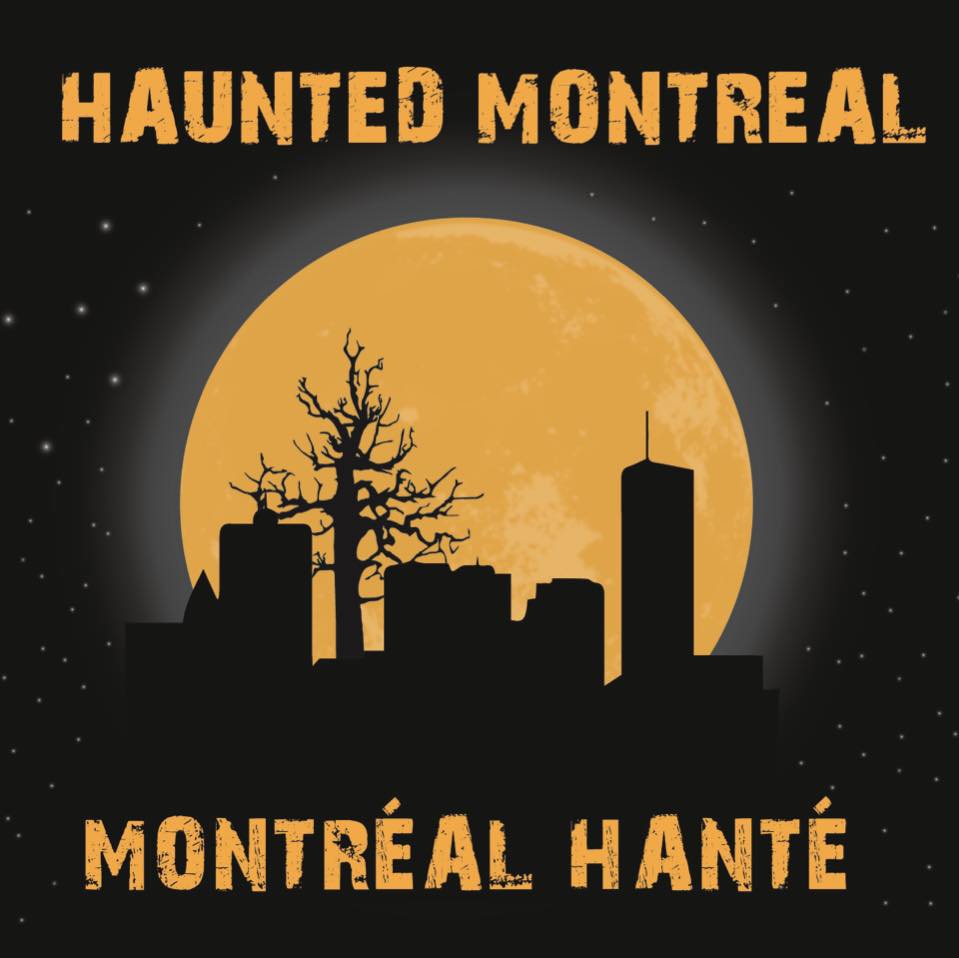
We are also pleased to announce that all of our ghost tours are now operating and tickets are on sale! These include Haunted Mountain, Haunted Griffintown, Haunted Downtown and the new Haunted Pub Crawl!
Our September blog examines the Old Saint-Antoine Cholera Cemetery in the heart of Downtown Montreal. Known to be rife with paranormal activity, it is the location of our new Paranormal Investigation activity. Based on ghost-hunting TV shows and starting on Friday the 13th of September, it is an experience not to be missed for ghost hunters, paranormal researchers and fans of the otherworldly. Details below!
Haunted Research
Dorchester Square and Place du Canada, popular parks in the heart of Downtown Montreal, harbor a very dark secret. Lurking just below the soil are the skeletons of an estimated 70,000 Montrealers, many of them victims of cholera who were buried in mass graves during epidemics in the mid-1800s. Once known as Saint-Antoine Cemetery, the Catholic burial ground operated from 1799 until the 1855 when it ran out of space. Rife with paranormal activity, the Old Saint-Antoine Cemetery is a largely-forgotten and yet haunted stain on the city’s urban fabric.
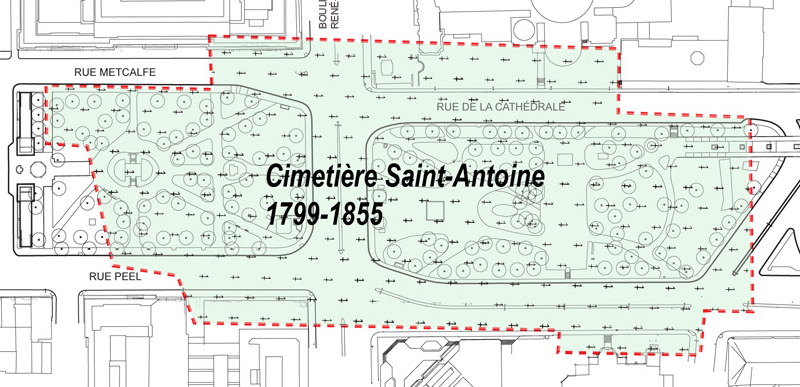
Firstly, after dark, the atmosphere of the cemetery changes and a lot of people have reported feeling nervous and uncomfortable after sun down. For those daring enough to stay in the burial ground, there have been reports of strange shapes moving about, mysterious mists and floating orbs in the treetops. On occasion, ghostly apparitions have been spotted wandering the cemetery and, in what is almost certainly cases of residual hauntings, the disembodied voices of muffled prayer and moaning can still be heard, not to mention sudden screams of agony that sometimes pierce the cemetery. The disturbing screams tend to occur in the south-west corner of the Dorchester Square portion of the old cemetery.
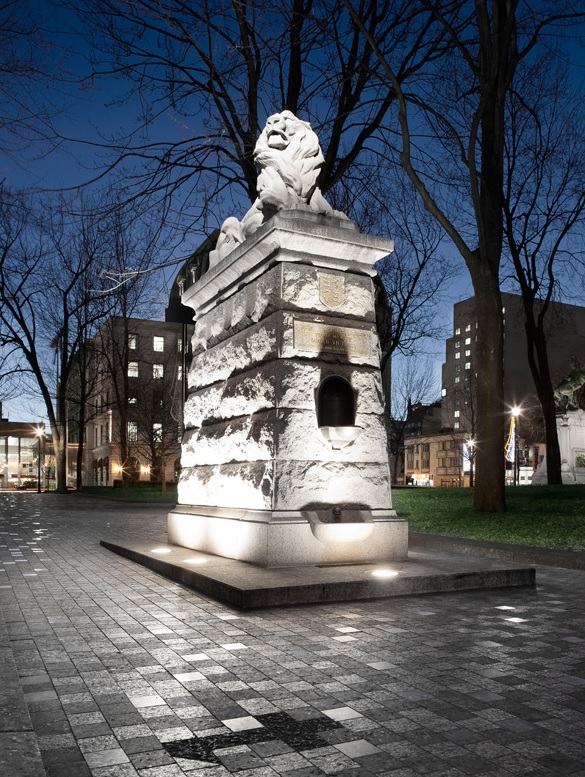
To understand why these voices of the dead are still making a commotion, it is important to understand the horrible history of the Old Saint-Antoine Cemetery.
Early in the city’s history, bodies were buried inside the fortifications in what is now Old Montreal. However, when the British took over the city in 1760, public officials claimed that more burials would endanger public health.
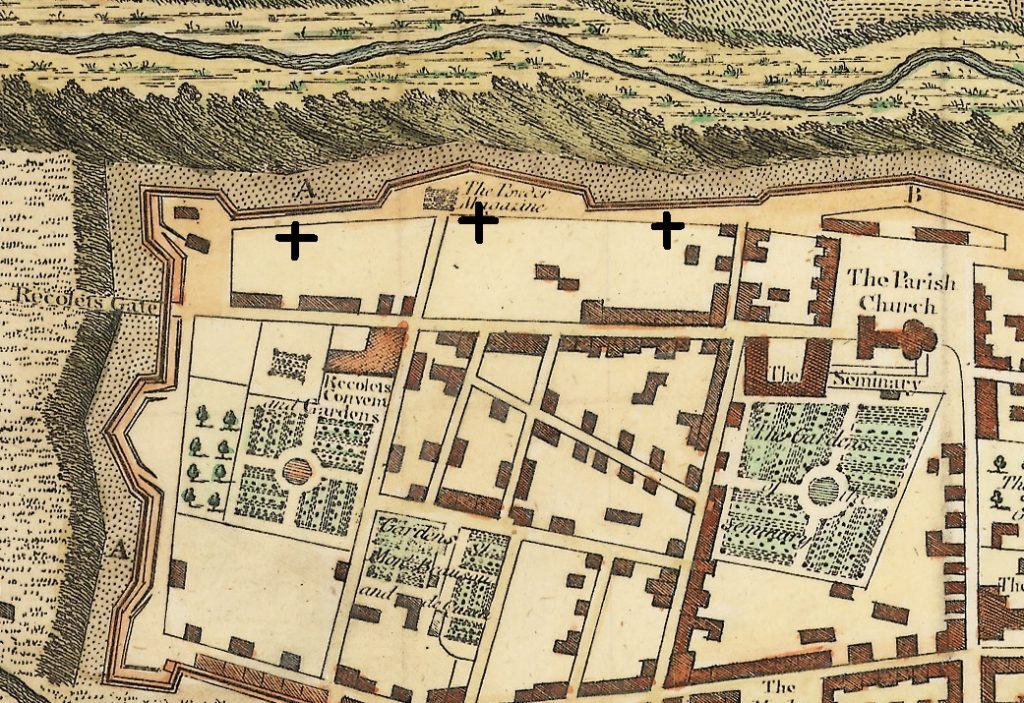
As such, new locations were sought for both the Catholic and Protestant cemeteries. A large plot of land was bought for 1500 pounds in what was then a rural area.
Named Saint-Antoine Cemetery, it catered to the Catholic residents. It was also known as the “Cholera Cemetery”, owing to five epidemics that struck, starting in 1832.
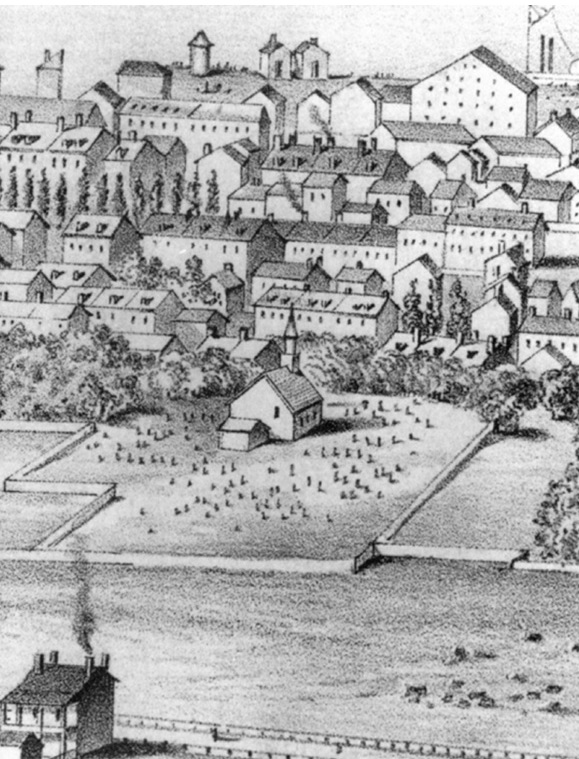
The first time the disease struck the city, Montreal was thoroughly devastated.
On June 9, 1832, an immigrant ship called the Voyageur arrived in the Montreal Harbour. As the passengers disembarked and moved into the city, it soon became clear that one man had been left behind.
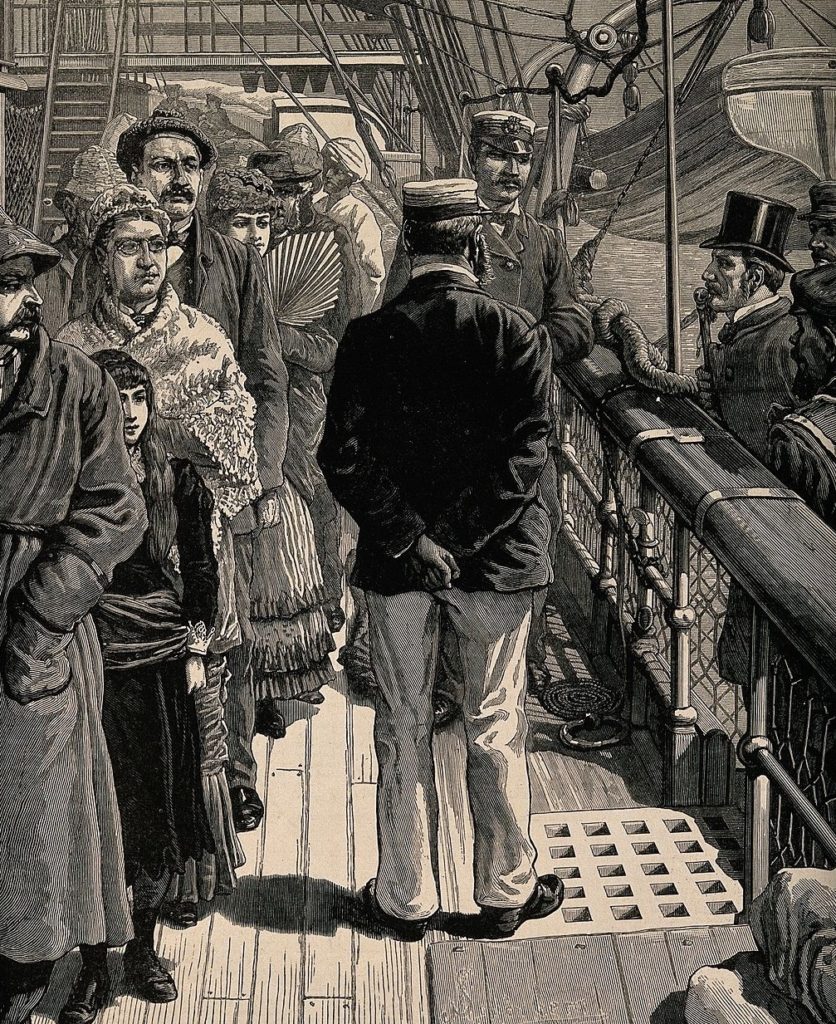
He was found lying on his back on the ship’s deck, twitching in a state of pain and agony. He was attended by Dr. Nelson, Montreal’s Health Commissioner. The diagnosis was clear: the man’s blood had turned black, meaning Cholera had descended on Montreal, an extremely deadly and contagious disease.
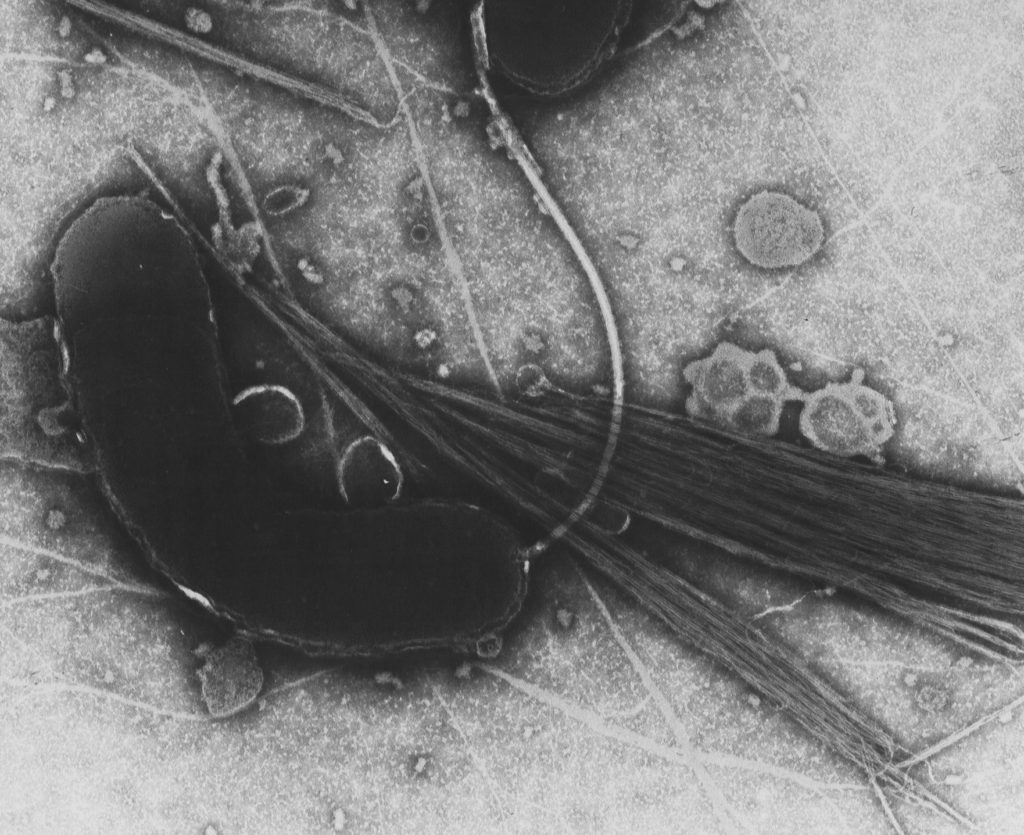
The disease spread like wildfire and as the Cholera spread throughout the city, its victims began to multiply dramatically.
Dr. Nelson oversaw the efforts to quell the disease. He ordered barrels of tar to be lit on fire throughout the city to try and purify the air and he put all medical personnel on alert.
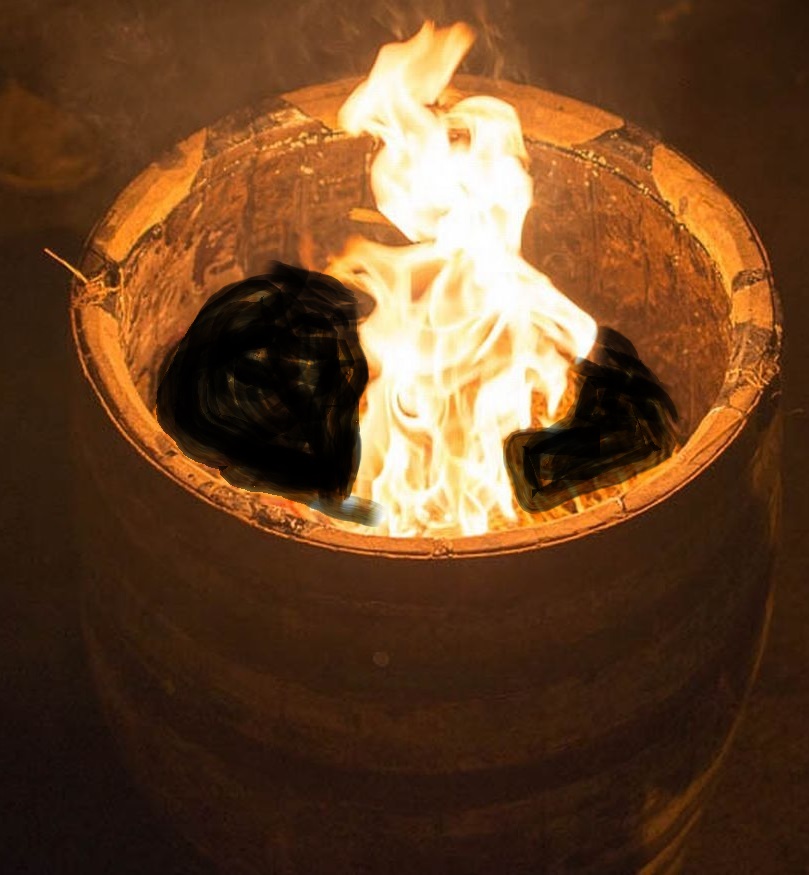
Death-carts began rolling through the streets with yellow flags fluttering to warn of the dangers of contagion. Gravediggers called out “Have you any dead? Have you anyone to send to the burial ground?”
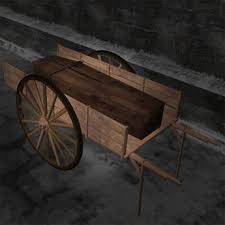
The bodies were collected, put into rough coffins, 2 – 4 per cart, and then carted to Saint-Antoine Cemetery, where they were piled into stacks. There was no attempt to separate the men and women and no records were kept, largely because the gravediggers were all illiterate. With the rapid spread of the disease, it was soon impossible to bury the dead quickly enough.
Only 3 days after the first case, more than 150 coffins were stacked in Saint-Antoine Cemetery and the gravediggers could no longer cope with Dr. Nelson’s orders to bury each body within 6 hours.
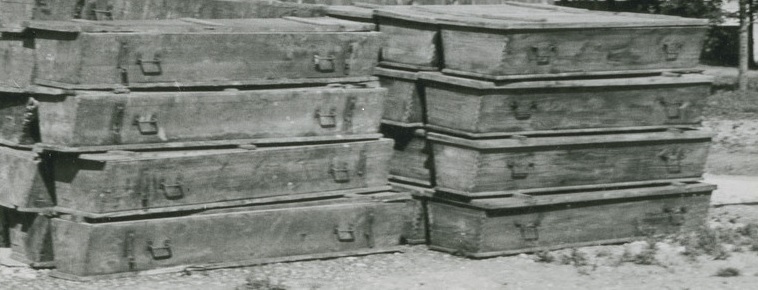
When Dr. Nelson threatened to burn the grim pile of corpses to ward off the disease, the Sulpician priests ordered their parishioners to bring their shovels and spades to the cemetery to help with the gruesome task. Trenches were dug 8 feet deep, 10 feet wide, and over 100 feet long. Crude coffins were stacked in the trenches and quickly covered with soil to try and stop the spread of the disease.
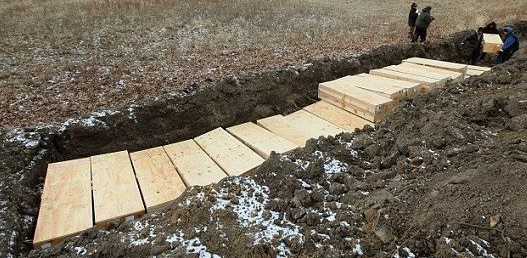
The mood in the city was very depressing, and one recent immigrant named Mrs. Susana Moodle wrote: “The sullen toll of the death-bell, the exposure to ready-made coffins in the undertakers’ windows, and the oft-recurring notice placarded on the walls, of funerals furnished at such and such a place, at cheapest rate and shortest notice, painfully reminded us, at every turning of the street, that death was everywhere – perhaps lurking in our path…”
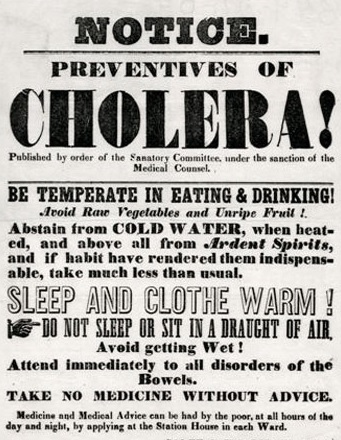
Doctors were taken off-guard by Cholera because they had never seen anything like it. Medical science was still in its infancy and most doctors subscribed to or invented theories about how best to treat diseases. There was no consensus on how to treat Cholera, but the use of opium, bleeding and bedrest were seen as “infallible” by Dr. Nelson.
Performing autopsies was considered the best way to learn about diseases, and medical students often resorted to grave-robbing to obtain corpses for their anatomy classrooms because it was very difficult to meet supply otherwise.
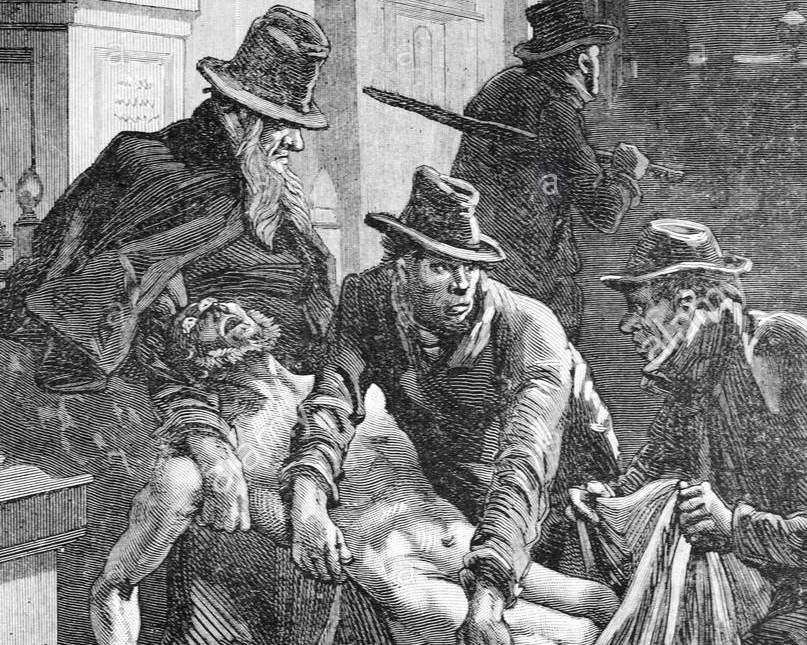
With the Cholera epidemic in full swing, there was no shortage of bodies to cut open to study. To take advantage of the situation, the doctors set up sheds directly in the cemetery, in the south-west corner of today’s Dorchester Square, to conduct autopsies and perform other operations. People began to describe the doctors as overzealous and deranged, and it wasn’t long before indignant newspaper editors began to describe the sheds as “slaughterhouses.”
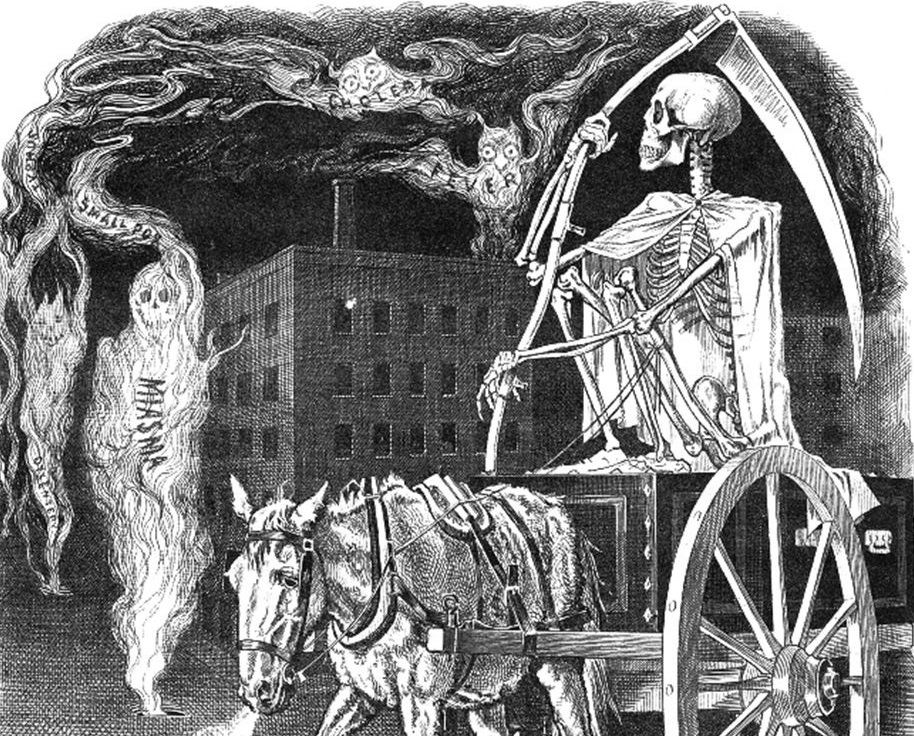
Montreal’s Catholic citizens asked their priests to intervene make the autopsies stop, but instead, the priests joined the doctors in the cemetery sheds to help perform a very rare and unusual operation.
Pregnant women who were nearing death would often beg the doctors to perform an operation known as an “infant baptism”. Because the Catholic faith insisted on baptism to enter Heaven, these women hoped that their fetuses could receive salvation to join them in Paradise.

However, the only way to do this was to perform a Cesarean operation in order to expose the unborn baby, at which point a priest could baptize it. The devoted women would scream in pain and agony as the doctors cut open their bellies, revealing the fetus. Priests would then sprinkle holy water into the open womb, before both mother and unborn child perished.
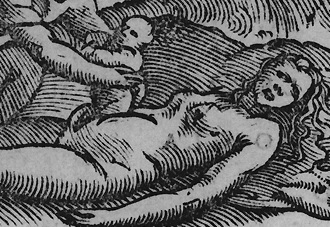
Overall, the doctors, with the help of a midwife named Madam Tavernier, carried out around 30 of the these so-called “infant baptisms” in the cemetery.
There is speculation whenever someone hears the disembodied voices moaning in pain or screaming in agony, it is the spirits of these faithful women who insisted on being ripped open before death to try and obtain salvation for their unborn children.
On the other side of René Lévesque Boulevard, which bisects the cemetery, allowing daily traffic to roll over the dead, Place du Canada has many similar paranormal activities. These include the strange orbs floating through the treetops, mumbling prayer noises and the occasional wandering apparition.

Place du Canada is also interesting because there are an above average number of medical emergencies in the park, especially near the Statue of John A. MacDonald. It is one of the city’s busiest places for ambulances to tend to victims of panic attacks, shortness of breath, heart attacks, strokes and these sorts of things. Many people believe that the statue is haunted, its eyes following people as an additional macabre element in a cemetery rife with paranormal activity.
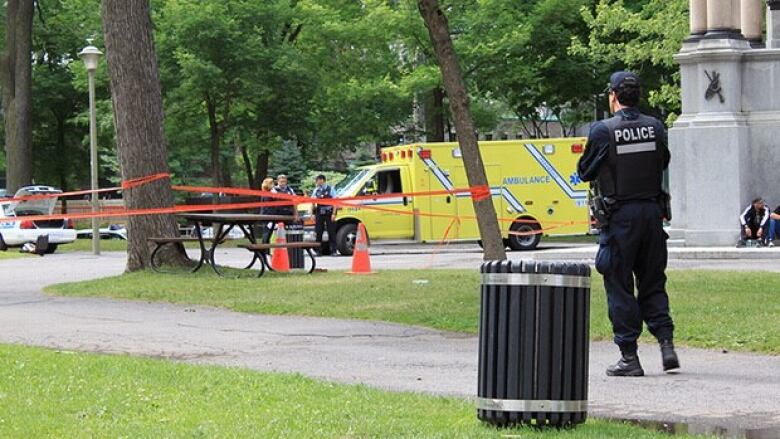
One especially haunted part is the road to the east, Rue de la Cathédrale, which used to be called Cemetery Street. In 1832, it was a corpse lane that led from the cemetery to Saint Antoine Street down the hill.
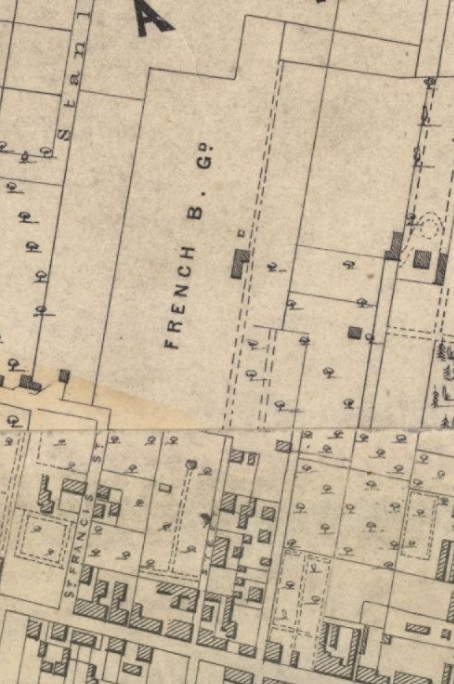
One warm summer night in July at around 2 a.m., a police officer patrolling on Saint Antoine Street saw what appeared to be a corpse stumbling towards him. It was wrapped only in a “winding sheet”, as the burial garments were called in the era.
The corpse had turned off Cemetery Street and was rambling along eastwards, towards the city. Terrified, the officer ran back to the station, in a state of absolute panic, gasping to his superior officer that: “The dead are coming out of their graves!”
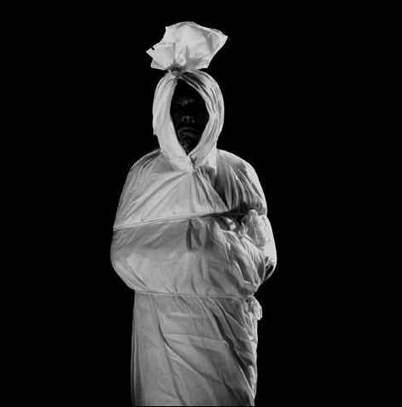
In another macabre case, workmen were digging a ditch alongside Cemetery Street several decades after the 1832 cholera epidemic and they came across a coffin that appeared to have sustained some damage.
The circumstances behind the macabre tale begin on June 26, 1832. A certain adolescent girl named Mademoiselle Hervieux decided to visit her best friend, Mademoiselle de Beaujeu, at her home at 320 Notre Dame Street in what is now Old Montreal.
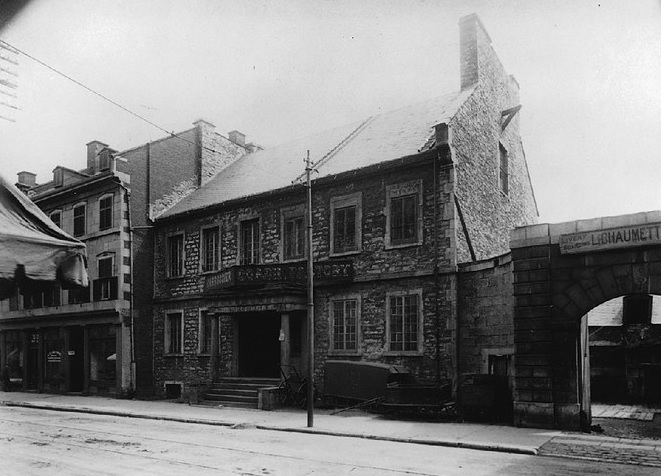
The master of the house, Seigneur Saveuse de Beaujeu, had died of Cholera on June 15th, and most of the family were at his seigneury to try and escape the disease. His daughter, Mademoiselle de Beaujeu, and two old servants remained at the house.
Mademoiselle de Beaujeu had been feeling depressed and Mademoiselle Hervieux was hoping to cheer her up with a cup of tea and some conversation.

However, after just two hours in the Beaujeu household, at 10 p.m., Mademoiselle Hervieux began to feel rather unwell. Perhaps the servants didn’t air out the house well enough!
Mademoiselle Hervieux began to feel hot flashes followed by cold, shivering chills. Then, she began to cough, heave, purge and vomit. Finally, Mademoiselle began to feel the pain and her body began to prostrate and twitch – the classic symptoms of Cholera.
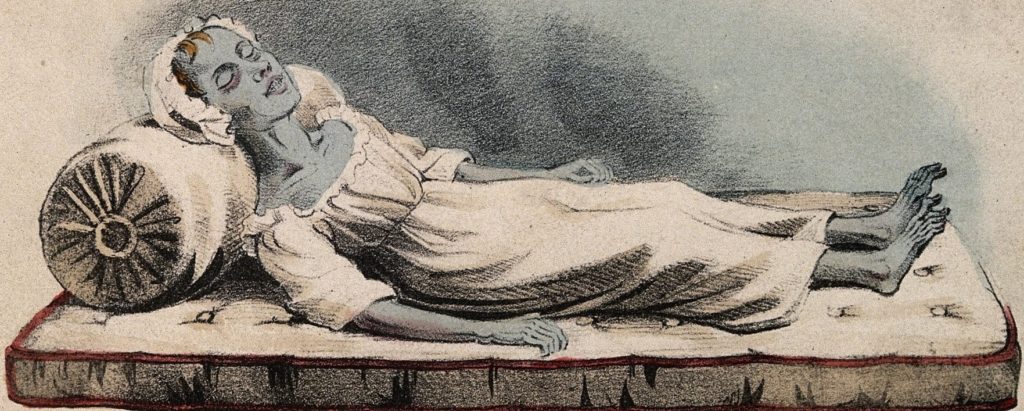
Because Mademoiselle came from a wealthy family, they decided to hire a doctor to see if there was anything that could be done for poor Mademoiselle.
She was attended to by Dr. Daniel Arnoldi, the first president of the College of Physicians and Surgeons of Lower Canada, and by two or three gentlemen, “nightwatchers”.
The first thing Dr. Arnoldi did was prescribe a large, blue opium pill.
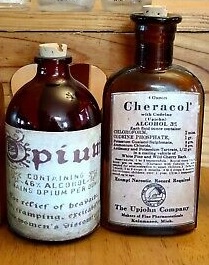
If the patient could hold down the opium, the heaving often stopped, allowing the doctor to operate. Mademoiselle Hervieux held down the opium and soon her mind drifted far, far away.
The doctor then began probing her, looking for bad blood, the black stuff. He bled her by making small incisions into her veins with his scalpel. He then reached into his Leech Jar and affixed the small bloodsucking creatures to Mademoiselle’s puncture wounds to extract the blood.
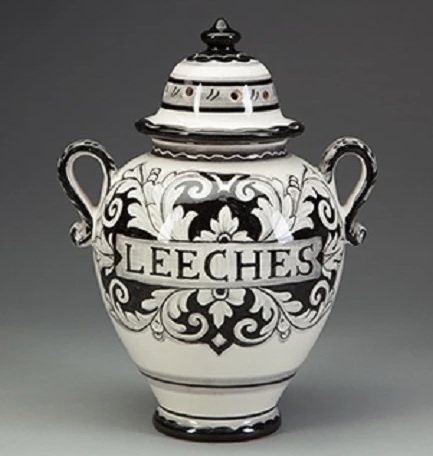
After removing 30 ounces of polluted blood, the doctor noted how cool and clammy Mademoiselle was to the touch. That’s why he heated up two hot laundry irons, which he “promenaded down each side of the spine and back,” in order to re-heat her body, in order to re-animate her.
Unfortunately, it appeared as though the operation was unsuccessful – Mademoiselle Hervieux was declared dead at daylight the following morning, June 27th.
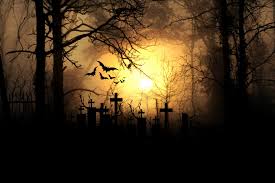
Mademoiselle’s family were very upset and the idea of burying her dignified body anonymously in a mass grave was all a bit too much. They decided to bribe the gravedigger a substantial amount to place her body into a crude wooden coffin, bearing her name, and to deposit it into the side of Saint-Antoine Cemetery with a wooden cross to mark the spot. A death-cart was ordered for Mademoiselle and she was buried in haste, still in her dress and jewellery.
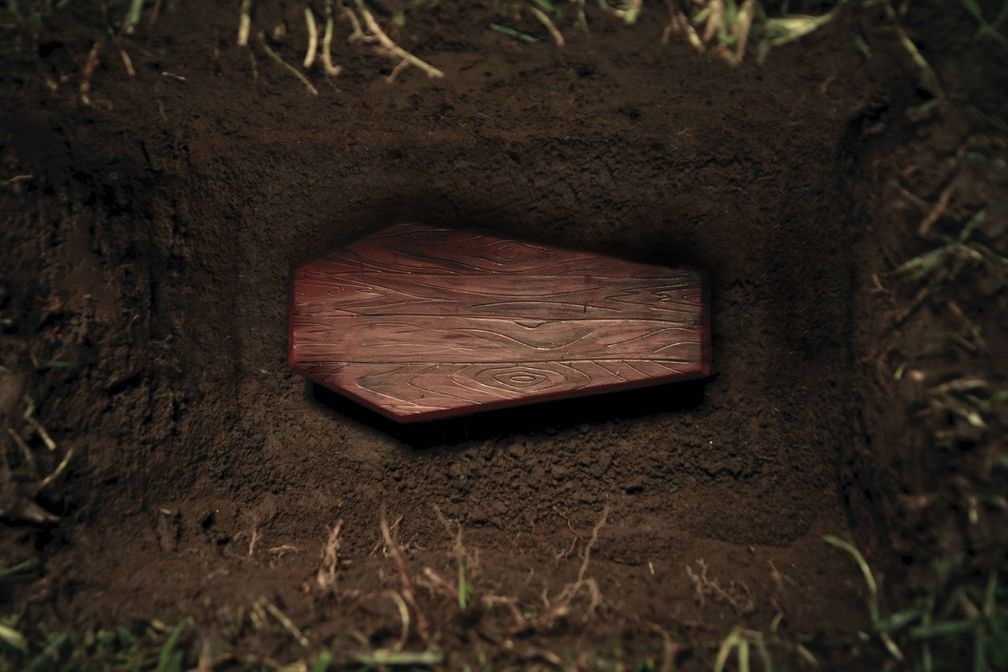
The next part of the story has been described as being a bit “disturbing”. One of the problems that sometimes arrived was gruesome: not everyone who ended up in Saint-Antoine Cemetery was actually dead. Some of them were merely incapacitated from the large doses of opium. For the luckier ones, when they woke up inside a coffin piled in a stack, waiting to be buried, and could be saved by banging on the side to alert the gravediggers.
However, not everyone was so lucky. Some of the victims woke up in crude coffins, already buried underneath the Earth itself. Such was the case of Mademoiselle Hervieux. The workers noted that the coffin had sustained some damages. Indeed, Mademoiselle had used her left elbow to smash a hole in the side of the coffin. Her left arm was extended out into the soil. By now it was in a skeletal state.
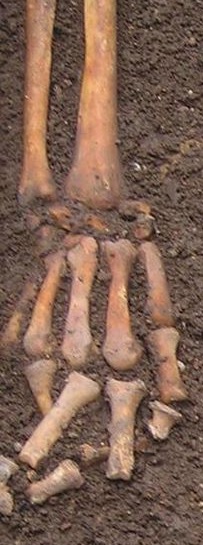
Inside the coffin, Mademoiselle’s right arm was no longer in the standard funeral position. For some reason, during her final hours, Mademoiselle’s right arm had snaked its way up towards her face, and she spent her final hours gnawing away on her wrist! The ditch diggers speculated that perhaps she got hungry, waiting all alone, under the ground.
Returning to earlier in the story, the stumbling “corpse” that had so terrified the policeman on was actually a fellow named Bill Collins who had been mispronounced as dead because the opium had induced a coma. Mr. Collins was fortunate enough to wake up before being buried because a new trench was to be dug in the morning. His coffin was on the top of the stack and he had pulled himself out and ran back towards the city, dressed only in his burial shroud. While he may have given the officer the fright of his life that warm night in 1832, Mr. Collins went on to live to a ripe, healthy old age of 92 years.
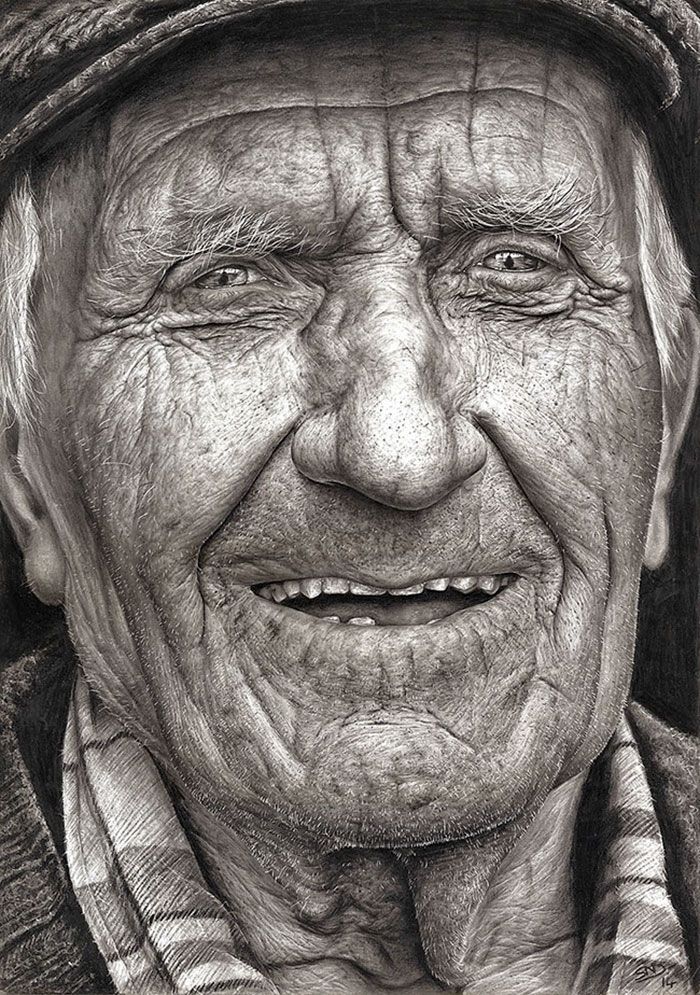
In that truly horrible summer, Cholera killed off almost 15% of the city’s residents. 1,900 Montreal citizens perished, out of a city with just 27,000 people at the time. To make matters worse, Cholera epidemics would nail the city five more times in the coming decades, keeping the gravediggers very busy and causing the cemetery to fill up very quickly.

By the 1850s, the cemetery was almost full. It had expanded across both today’s Peel and Metcalfe Streets and contained an estimate of more than 70,000 bodies. On July 31st, 1853, history repeated itself as a committee formed to choose a location for a new cemetery. In 1854, land was purchased near the toll-gate on Cote-des-Neiges Road on the western slope of Mount Royal, and in 1853 the Catholic Notre-Dame-des-Neiges Cemetery was opened.
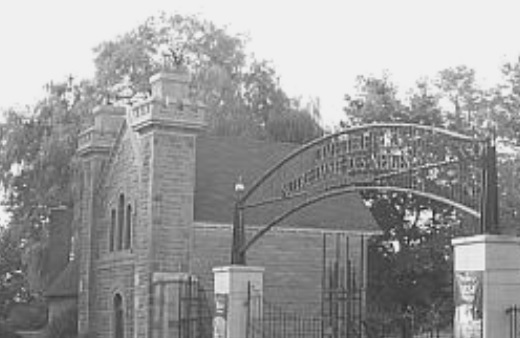
Saint-Antoine Cemetery received its last body for burial in 1855, then began to fall into a state of dilapidation.
Wooden crosses began to rot as weeds started choking the old burial ground. The abandoned corpse-house, with its creepy inscription on the folding door: “Aujourd’hui pour moi, demain pour vous,” was soon defaced with lewd graffiti.
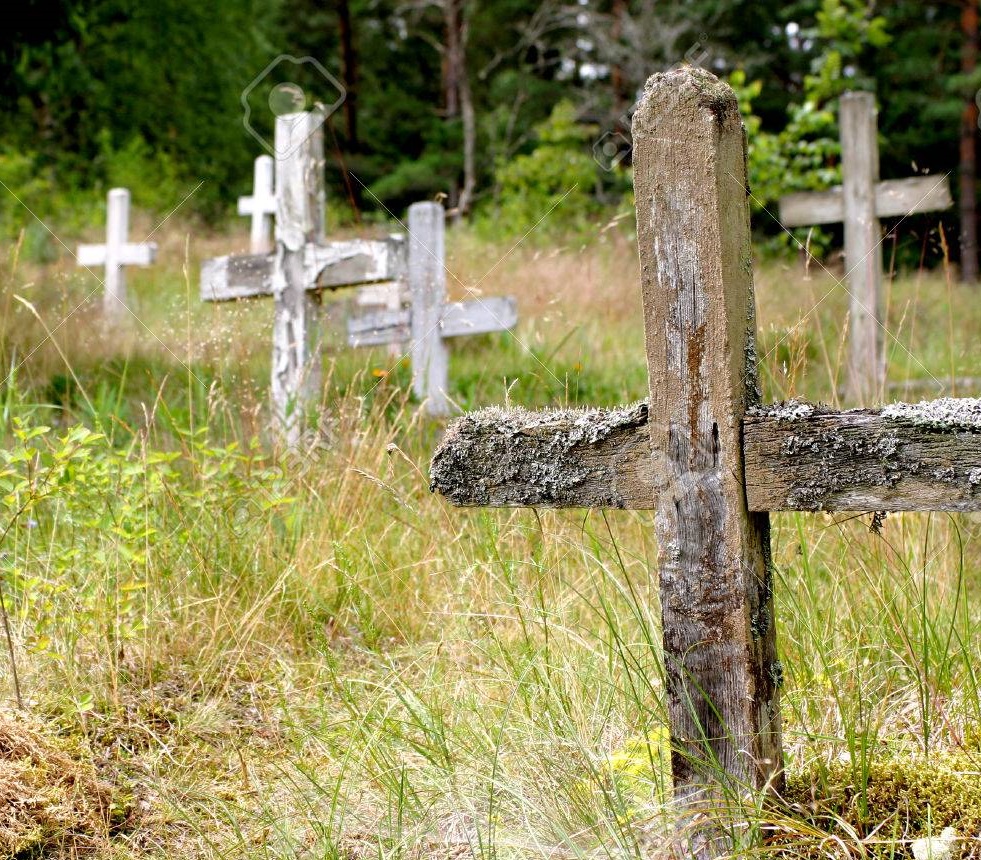
Eventually, the City decided that the land was too valuable not to be re-purposed. The remaining crosses, tombstones, and the corpse-house were removed and the land was divided into plots for sale. To prepare the land being sold, corpses were dug up in the crudest of manners, as workers smashed apart the coffins and shoveled the remains and coffin-boards into jumbled piles on carts.
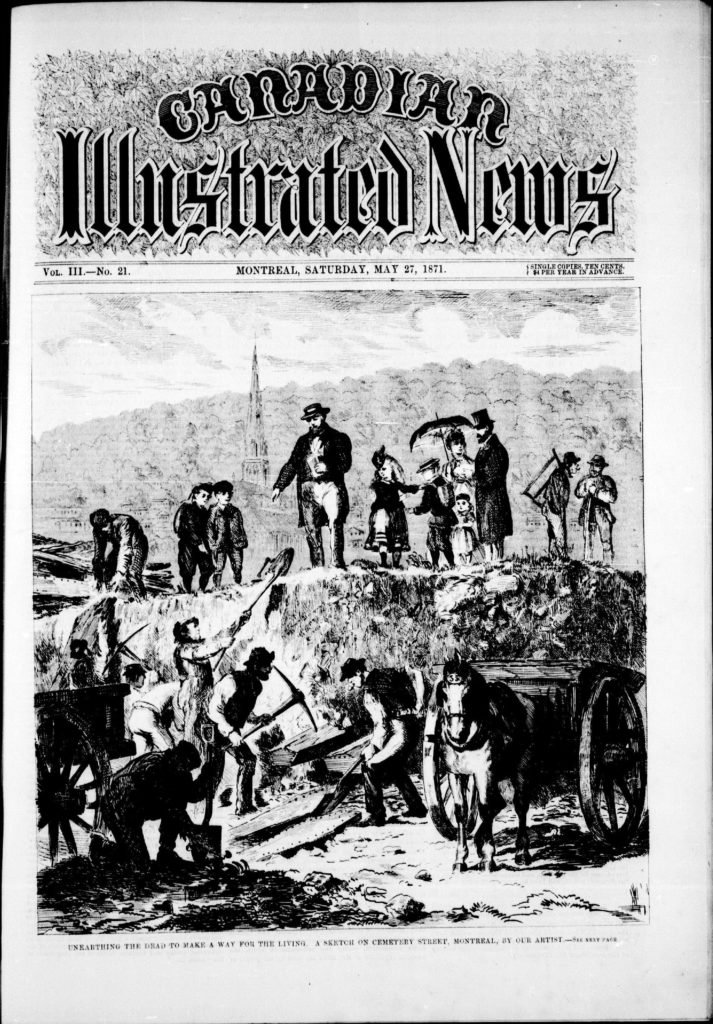
There were some indignant protests at the way the dead were being treated. Others feared unearthing the dead could lead to disaster. In 1866, Dr. Nelson published his thoughts and gruesome observations about the deadly epidemics in a book called Asiatic cholera, its origin and spread in Asia, Africa, and Europe, introduction into America through Canada: remote and proximate causes, symptoms and pathology, and the various modes of treatment analyzed.
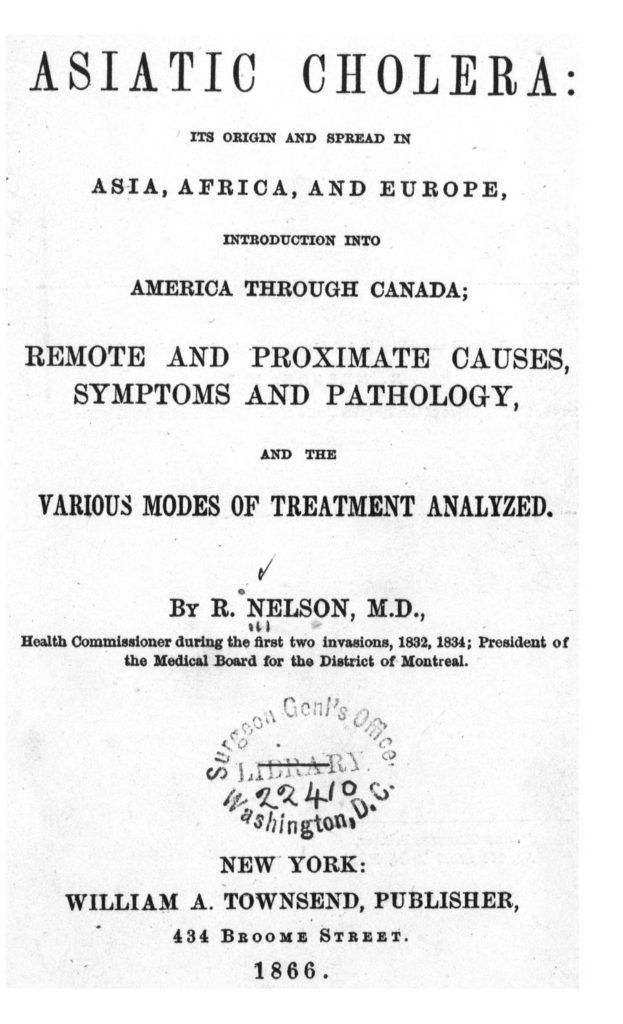
This may have influenced Dr. Philip Pearsall Carpenter, head of the Sanitary Association of Canada, to lead a campaign to stop the exhumations, claiming it could trigger another Cholera epidemic, as it had done in London and Bristol. Work was halted in the summer of 1867, but resumed after only a few months. By 1869, Dr. Carpenter had persuaded the city to expropriate the cemetery for use as a public park. Victory was only achieved after a petition was filed, signed by many of the city’s most prominent residents. The land was sodded, trees were planted, pathways laid out, and the cemetery was re-christiened “Dominion Square”. Every effort was made to forget about the tens of thousands of corpses lying just below the ground.
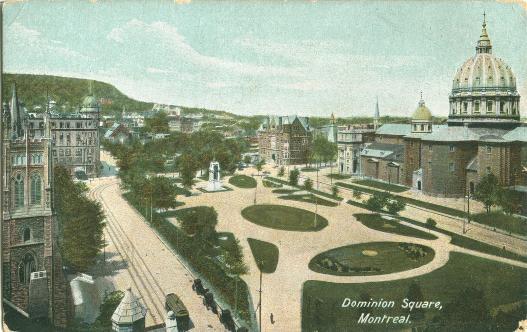
Dominion Square was cut in half in 1969, when the southern square was renamed Place du Canada. After the death of René-Levesque in 1976, Dorchester Street was renamed after the famous politician. Hundreds of corpses lie beneath the teeming boulevard. Dominion Square was renamed “Dorchester Square”, doing away with an unpopular colonial name.
More recently, the parks were refurbished. In 2009, the city budgeted millions of dollars to start sprucing up the two squares. After finishing Dorchester Square at a cost of $9 million, the Place du Canada renovation was put on hold for a time in 2012 after officials suspected mafia involvement in the work.

The work involved refurbishing old monuments, improving lighting and landscaping, and laying granite pathways. The city has a policy when skeletons are unearthed during work: human remains are reburied at the Catholic cemetery on Mount Royal.
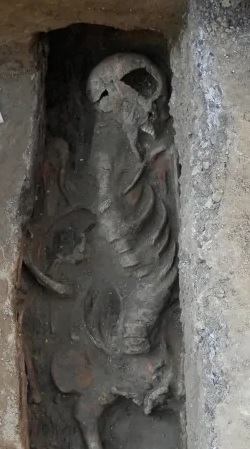
The city also decided to inscribe something special into the granite pathways to mark the dead. Forgetting the old cemetery had proven very difficult, if not impossible.
Today, those passing through the parks who look at the ground will see Latin crosses inscribed into the granite pathways. These crosses discretely commemorate the tens of thousands of skeletons lying just below the ground, many of them still stacked in the numerous burial trenches.
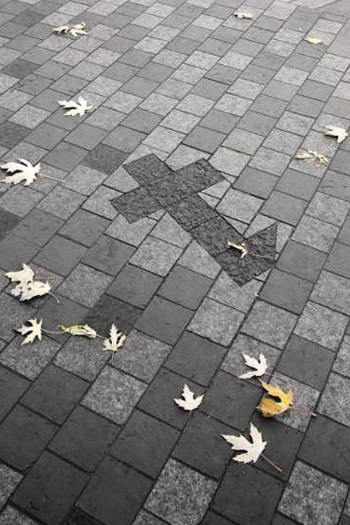
The fact that so many people died tragically here, either before or after their burials, is one of the main reasons the Old Saint-Antoine Cholera Cemetery is said to be so haunted.
Company News
Firstly, Haunted Montreal is pleased to announce our new Paranormal Investigation of the Old Saint-Antoine Cholera Cemetery. The activity is designed for those interested in the paranormal and ghost hunting, as seen on ghost hunting programs like Rencontres Paranormales, Most Haunted, TAPS’ Ghost Hunters, Haunted Collector and others.
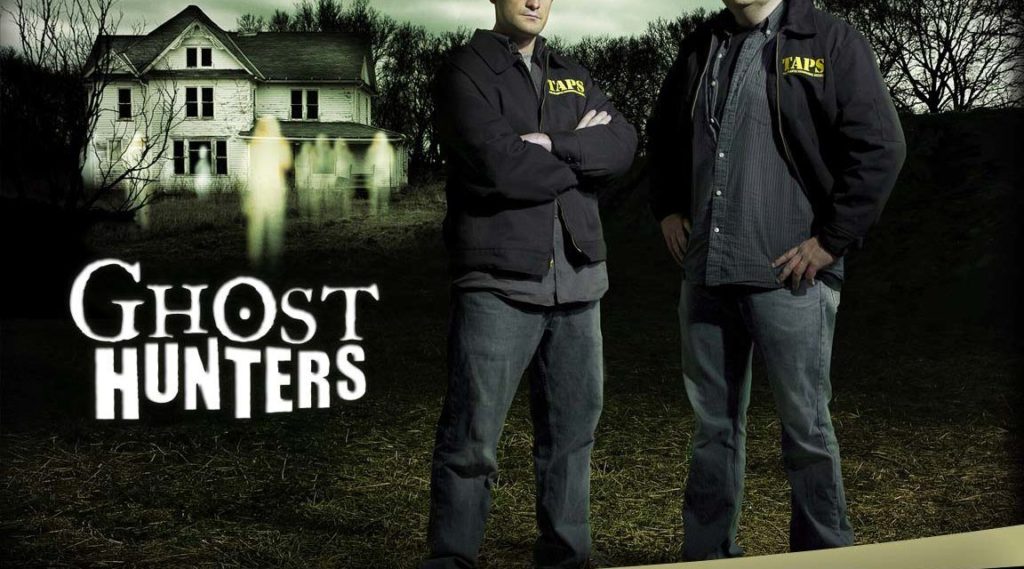
Hosted by an expert in the paranormal, clients will be provided with ghost-hunting tools such as dowsing rods, EMF Readers, Temperatures Guns and other devices to communicate with the many deranged spirits that haunt the Old Saint-Antoine Cholera Cemetery.
The first Paranormal Investigation of the Old Saint-Antoine Cholera Cemetery is scheduled tonight, on Friday the 13th of September at 8 pm. It will run every Friday night at this time until early November.

Additional Investigations may be added for the Hallowe’en Season. Tickets are now on sale!

For those wishing to learn more about paranormal investigations, Haunted Montreal recommends So You Want to Be a Paranormal Investigator? by Russell Phillip Masters. According to the publishers:
“This book will guide the new investigator to begin investigating safely and give the experienced investigator another area of paranormal investigation used by the investigators of the past. Maybe you just have the interest in the paranormal; I am sure this book will not disappoint. In this very educational book, you will learn the safe way to carry out an investigation and look at how our ancestors protected themselves when doing the same. Furthermore, this book will also teach you to investigate on a budget and not get ripped off by the many companies out there that offer paranormal investigation equipment.”
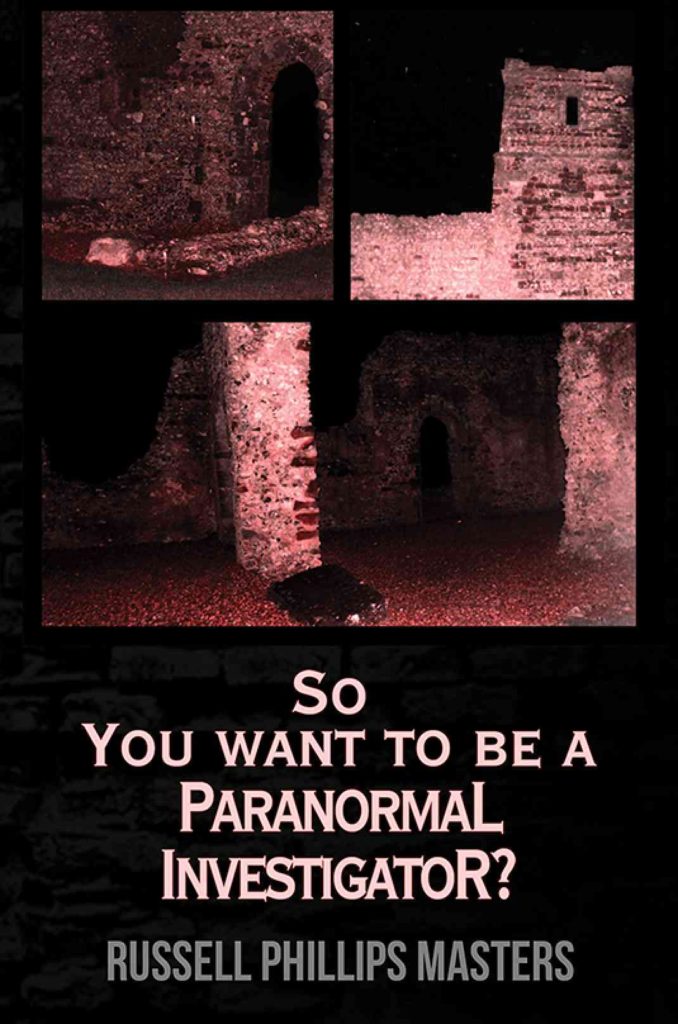
According to author Russell Phillip Masters:
“Every town, village, city and country have their own myths, legends and ghost stories. In my experience there is no smoke without fire. Years go by and stories are added to by the Chinese whisper method, these stories are still worth checking out as they had to start somewhere.”
In his book, Russell Phillip Masters provides a detailed description of different types of hauntings, including various examples from the United Kingdom, and also explains how you can obtain ghost hunting tools – or make them yourself on the cheap!
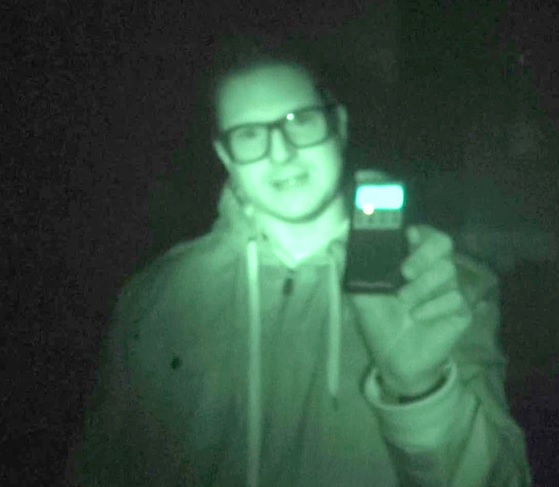
Haunted Montreal’s public season of ghost tours is also in full operation as we approach the Hallowe’en Season! These include Haunted Mountain, Haunted Griffintown, Haunted Downtown and the new Haunted Pub Crawl! Tickets are on sale!
Our Haunted Pub Crawl is led by a professional ghost storyteller and visits three haunted bars. Starting at McKibbin’s Irish Pub in Downtown Montreal on Bishop Street, guests not only learn about many of the haunted drinking establishments in the city, but also hear Montreal’s most infamous ghost stories.
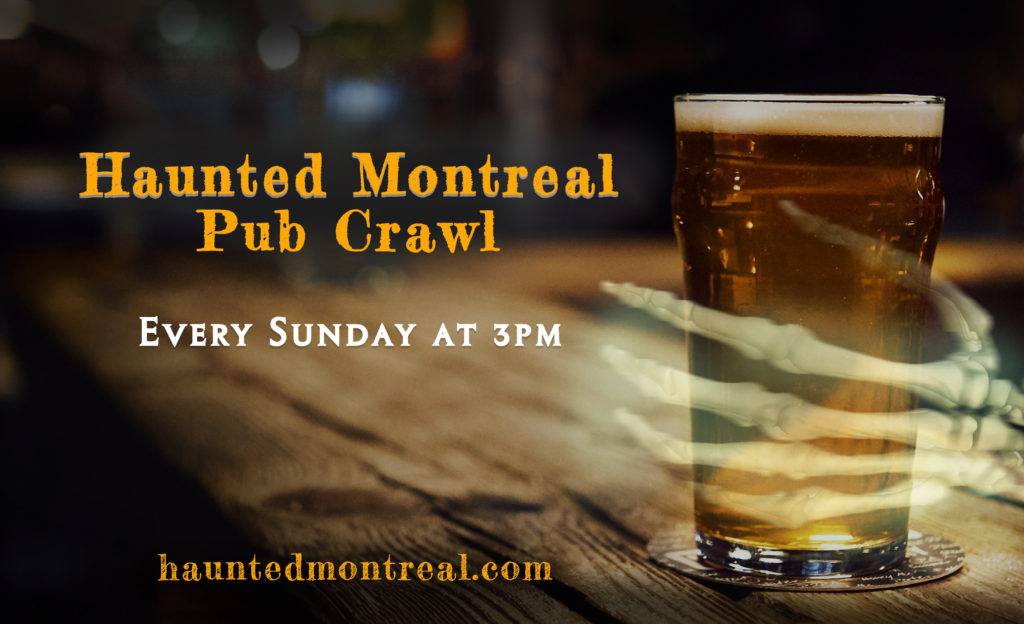
While sipping suds, guests enjoy haunted pubs, spine-tingling Montreal ghost stories and learn about the historical forces that transformed the ancient Indigenous island of Tiotà:ke into Ville-Marie, an austere French colony founded by Catholic evangelists.
After the British invaded, the city became a booming financial center and crime hub, a site of violent rebellion and subversive revolution and finally into Canada’s most haunted city.
Clients hear the paranormal tales behind mysterious McKibbin’s Irish Pub, the famous Sir Winston Churchill, funeral-home-cum-discotheque Club Le Cinq and, of course, Hurley’s Irish pub, where a ghost known only as the Burning Lady haunts the establishment.
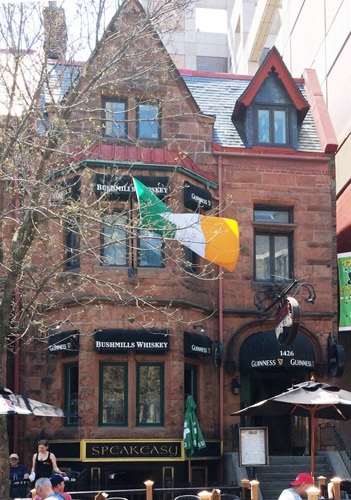
The ghost storyteller regales guests with Montreal’s most deranged and infamous ghost stories, including Simon McTavish, a Scottish fur baron known to toboggan down the slopes of Mount Royal in his own coffin, the ghost of John Easton Mills, Montreal’s Martyr Mayor who perished while tending to typhus-stricken Irish refugees during the Famine of 1847, and Headless Mary, the ghost of a Griffintown prostitute who was decapitated by her best friend in the shantytown in 1879. She returns every 7 years to the corner of William and Murray Streets, still looking for her head!
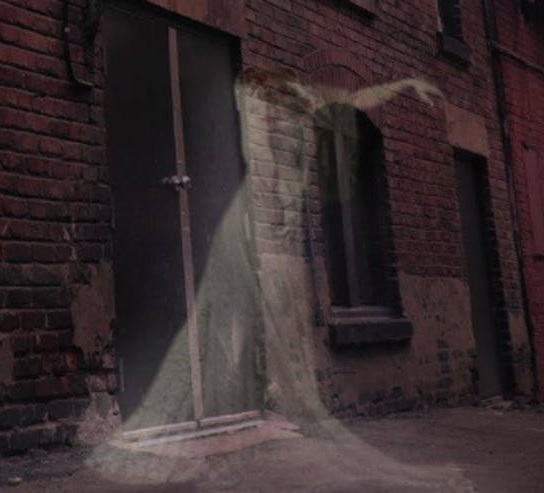
Join Haunted Montreal on this unforgettable pub crawl, where you can drink some spirits with a spirit, all the while learning about the city’s deranged history and hearing spine-tingling local ghost stories!
For full details, including a description, the starting location and schedule, please visit our new web page! Join us at 3 pm any Sunday of the year for a haunted pub crawl in English or at 4 pm in French! Tickets are now on sale!
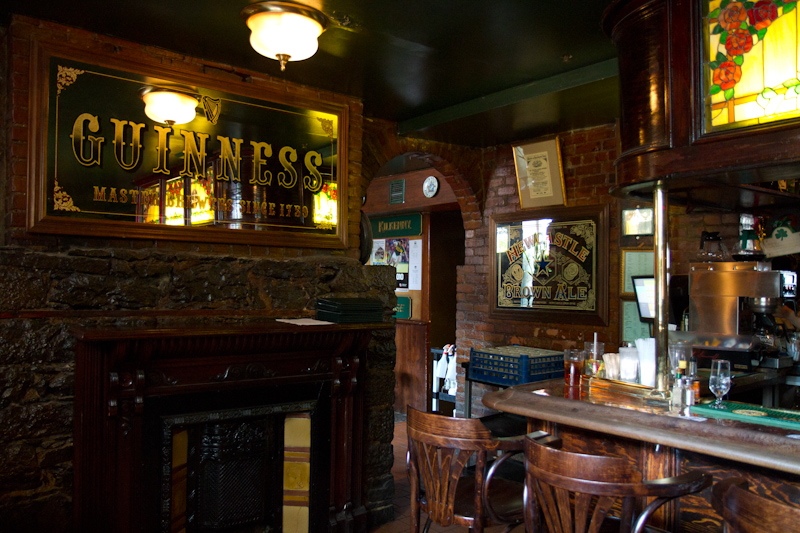
Haunted Montreal also offers private tours and pub crawls for company outings, school groups, bachelorette parties and all types of gatherings. Please contact info@hauntedmontreal.com to organize a private tour.
We are also pleased to promote a book called Macabre Montreal.
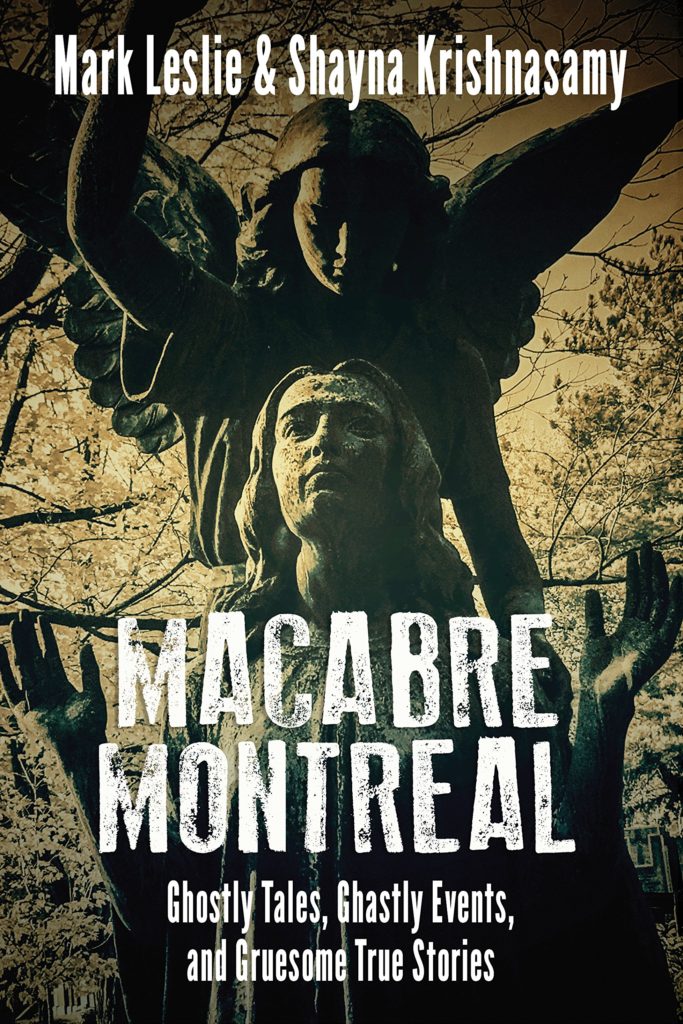
Written by Mark Leslie and Shayna Krishnasamy, it is a “collection of ghost stories, eerie encounters, and gruesome and ghastly true stories from the second most populous city in Canada.
The authors write:
“Montreal is a city steeped in history and culture, but just beneath the pristine surface of this world-class city lie unsettling stories. Tales shared mostly in whispered tones about eerie phenomena, dark deeds, and disturbing legends that take place in haunted buildings, forgotten graveyards, and haunted pubs. The dark of night reveals a very different city behind its beautiful European-style architecture and cobblestone streets. A city with buried secrets, alleyways that echo with the footsteps of ghostly spectres, memories of ghastly events, and unspeakable criminal acts.”
With the introduction written by Haunted Montreal, Macabre Montreal is a must-read for anyone interested in Montreal’s dark side.

Haunted Montreal would also like to thank all of our clients who attended a ghost walk or haunted pub crawl recently!
If you enjoyed the experience, we encourage you to write a review on our Tripadvisor page, something that helps Haunted Montreal to market its tours.

If you have any feedback, please email us at info@hauntedmontreal.com so we can improve our visitor experience.
Lastly, if you would like to receive the Haunted Montreal Blog on the 13th of every month, please sign up to our mailing list.

Coming up on October 13: Montreal’s Body Snatchers
In the mid-1800s, Montreal had a problem with bodies going missing from various cemeteries, including those on Mount Royal. With medical science starting to grow, there was an increasing demand for corpses in Anatomy departments, such as the one at McGill University’s Medical School. Despite the passing of the Anatomy Act in 1843, which made the bodies of those who died in provincially funded hospitals and “poorhouses” available to medical schools, there was a shortage of corpses for students to dissect and autopsy. This prompted a wave of body-snatching, whereby McGill students – and professors – would dig up bodies in the pauper’s graveyard late at night. Known as “the Resurrectionists”, these deranged corpse thieves would go on to inspire Montreal’s most infamous ghost story of the 1800s – that of Simon McTavish’s tobogganing ghost.
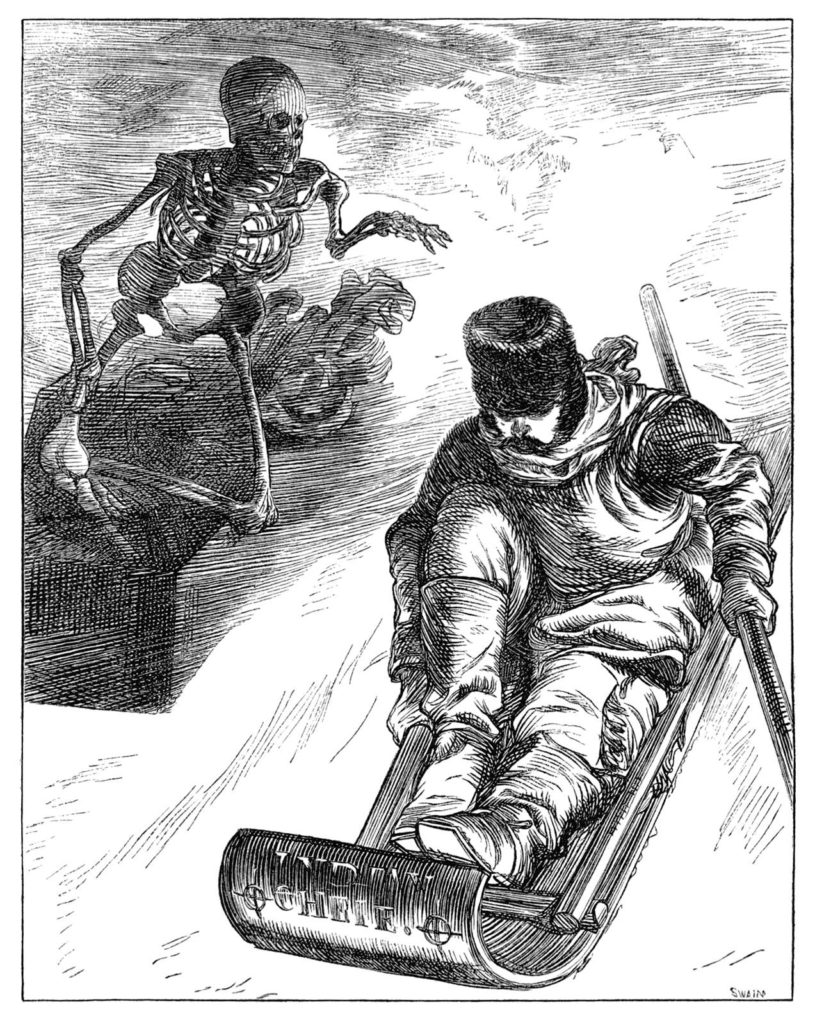
Donovan King is a postcolonial historian, teacher, tour guide and professional actor. As the founder of Haunted Montreal, he combines his skills to create the best possible Montreal ghost stories, in both writing and theatrical performance. King holds a DEC (Professional Theatre Acting, John Abbott College), BFA (Drama-in-Education, Concordia), B.Ed (History and English Teaching, McGill), MFA (Theatre Studies, University of Calgary) and ACS (Montreal Tourist Guide, Institut de tourisme et d’hôtellerie du Québec).




I love reading stories like this. I was born in Trinidad and we have lots of ghost stories.
Great write up.
I learned more about Dorchester Square in this brilliant
Ghost Eposode than I learned since I was born. I did not even know that Dominion Squares name was changed or that it was and I supose, still is A CEMETARY
Fabulous Work